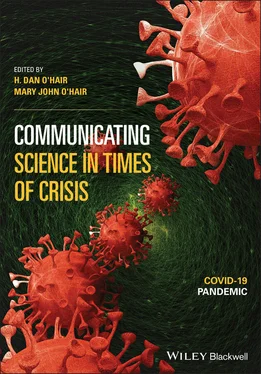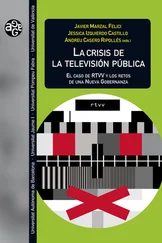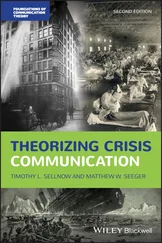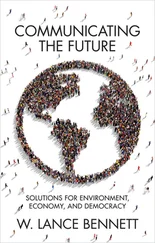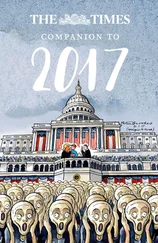There are glimmers of hope. A global survey by 3M indexes public attitudes toward science. The 2020 survey found a trend of decreasing agreement with the statement "I am skeptical of science" from pre- (35%) to post- (28%) pandemic, and a corresponding increase in trust of science. Scientists are normatively trusted as sources (67% to 84%) compared to friends or family (60%), colleagues (48%), company websites (47%), social media posts (27%), politicians (27%), or celebrities (25%). Much of these trends appears directly attributable to the COVID-19 pandemic. Research indicates that, at least on Facebook, the amount of user interactions with fake news recently decreased, even if such interaction was unchanged on Twitter (Allcott et al., 2019). Such optimism needs to be qualified, however, by the fact that this decrease represented a shift from 160 million engagements per month by the end of 2016 to 60 million, compared to 200–250 million engagements with more traditional news sources ( New York Times , Wall Street Journal , CNN , Fox News , etc.). Similarly, “on Twitter, shares of false content have been in the 3–5 million per month range since the end of 2016, compared to roughly 20 million per month for the major news sites” (Allcott et al., 2019, p. 4). That is, false information is still engaging tens of millions of people through social media, even after both media platforms instituted various internal algorithmic and surveillance changes intended to contend with such false information.
There is a plenty of space for critical and interpretive theory to contribute to managing such crises. However, implying that there are no immutable truths to such crises is not only untenable but dangerous. Diminution of fake news as mere trope, or celebrations of fake news as evidence of informational pluralism, must be tempered by the actual crises that increasingly threaten the human species, including climate change, despeciation, hunger, and, of course, diseases. Given that malignant actors and information distortion in social media can threaten democratic institutions, norms (Bradshaw & Howard, 2018; Brody & Meier, 2018; Nimmo et al., 2020; Pomerantsev & Weiss, 2014), and reforms (Jolley et al., 2018), disinformation cannot be presumed to produce net benefits in society. Some information can misinform and disinform in ways that exacerbate such crises, and in so doing, directly cause actual forms of cultural and institutional collapse along with widescale morbidity and mortality. There are those who infect media forums with toxicity in ways to disrupt, alienate, or control the narrative (Salminen et al., 2020). “Already we have seen people damage 5G infrastructure, assault people of Asian heritage, deliberately violate public health directives, and ingest home remedies, all in reaction to the various conspiracy theories active in social media and the news” (Shahsavari et al., 2020, p. 17). In the domain of economic systems, “digital misinformation has become so pervasive in online social media that it has been listed by the WEF [World Economic Forum] as one of the main threats to human society” (Del Vicario et al., 2016, p. 558). It may be only slightly ironic that climate change and pandemics are potential existential threats to our species’ survival, which makes the dystopic uses of information and communication that propel or sustain such threats their own kind of enabling existential threat.
This material is based on work supported by the National Science Foundation under Grant No. 1416509; the project is titled “Spatiotemporal Modeling of Human Dynamics Across Social Media and Social Networks.” Any opinions, findings, and conclusions or recommendations expressed in this material are those of the author and do not necessarily reflect the views of the National Science Foundation.
1 3M. (2020). State of science index: 2020 global report. https://multimedia.3m.com/mws/media/1898512O/3m-sosi-2020-pandemic-pulse-global-report-pdf.pdf
2 Alemanno, A. (2018). How to counter fake news? A taxonomy of anti-fake news approaches. European Journal of Risk Regulation, 9(1), 1–5. https://doi.org/10.1017/err.2018.12
3 Allcott, H., & Gentzkow, M. (2017). Social media and fake news in the 2016 election. Journal of Economic Perspectives, 31(2), 211–236. https://pubs.aeaweb.org/doi/pdfplus/10.1257/jep.31.2.211
4 Allcott, H., Gentzkow, M., & Yu, C. (2019). Trends in the diffusion of misinformation on social media. Research and Politics, 31(2), 211–236. https://doi.org/10.1257/jep.31.2.211
5 Allem, J.-P., & Ferrara, E. (2018). Could social bots pose a threat to public health? American Journal of Public Health, 108(8), 1005–1006. https://doi.org/10.2105/AJPH.2018.304512
6 Al-Rawi, A., Groshek, J., & Zhang, L. (2019). What the fake? Assessing the extent of networked political spamming and bots in the propagation of #fakenews on Twitter. Online Information Review, 43(1), 53–71. https://doi.org/10.1108/OIR-02-2018-0065
7 Alshaabi, T., Arnold, M. V., Minot, J. R., Adams, J. L., Dewjurst, D. R., Reagan, A. J., Muhamad, R., Danforth, C. M., & Dodds, P. S. (2021). How the world’s collective attention is being paid to a pandemic: COVID-19 related 1-gram time series for 24 languages on Twitter. PLoS ONE, 16(1), e0244476. https://doi.org/10.1371/journal.pone.0244476
8 Alzamora, G. C., & Andrade, L. (2019). The transmedia dynamics of fake news by the pragmatic conception of truth. MATRIZes, 13(1), 109–131. https://doi.org/10.11606/issn.1982-8160.v13i1p109-131
9 Andrade, G. (2020). Medical conspiracy theories: Cognitive science and implications for ethics. Medicine, Health Care and Philosophy, 23(3), 505–518. https://doi.org/10.1007/s11019-020-09951-6
10 Asprem, E., & Dyrendal, A. (2015). Conspirituality reconsidered: How surprising and how new is the confluence of spirituality and conspiracy theory? Journal of Contemporary Religion, 30(3), 367–382. https://doi.org/10.1080/13537903.2015.1081339
11 Atlani-Duault, L., Ward, J. K., Roy, M., Morin, C., & Wilson, A. (2020). Tracking online heroization and blame in epidemics. The Lancet Public Health, 5(3), e137-e138. https://doi.org/10.1016/S2468-2667(20)30033-5
12 Avramov, K., Gatov, V., & Yablokov, I. (2020). Conspiracy theories and fake news. In M. Butter & P. Knight (Eds.), Routledge handbook of conspiracy theories (pp. 512–524). Routledge.
13 Baesler, E. J. (1995). Construction and test of an empirical measure for narrative coherence and fidelity. Communication Reports, 8(2), 97–101. https://doi.org/10.1080/08934219509367615
14 Bangerter, A., Wagner-Egger, P., & Delouvée, S. (2020). How conspiracy theories spread. In M. Butter & P. Knight (Eds.), Routledge handbook of conspiracy theories (pp. 206–218). Routledge.
15 Baptista, J. P. & Gradim, A. (2020). Understanding fake news consumption: A review. Social Science, 9(185), 1–22. https://doi.org/10.3390/socsci9100185
16 Berduygina, O. N., Vladimirova, T. N., & Chernyaeva, E. V. (2019). Trends in the spread of fake news in mass media. Media Watch, 10(1), 122–132. https://doi.org/10.15655/mw/2019/v10i1/49561
17 Bessi, A., Zollo, F., Del Vicario, M., Scala, A., Caldarelli, G., & Quattrociocchi, W. (2015). Trend of narratives in the age of misinformation. PLoS ONE, 10(8), 1–16. https://doi.org/10.1371/journal.pone.0134641
18 Bjerg, O., & Presskorn-Thygesen, T. (2017). Conspiracy theory: Truth claim or language game? Theory, Culture & Society, 34(1), 137–159. https://doi.org/10.1177/0263276416657880
19 Black, P. J., Wollis, M., Woodworth, M., & Hancock, J. T. (2015, June). A linguistic analysis of grooming strategies of online child sex offenders: Implications for our understanding of predatory sexual behavior in an increasingly computer-mediated world. Child Abuse & Neglect, 44, 140–149. https://doi.org/10.1016/j.chiabu.2014.12.004
Читать дальше
